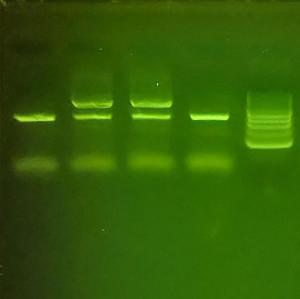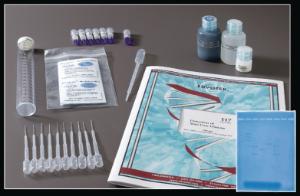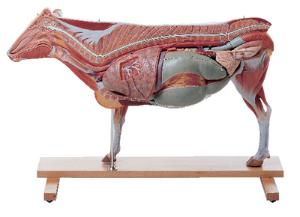Agricultural Science (Animals): Plus, a free student handout from AccessScience
Access to this content is available to Ward’s World readers for free from McGraw Hill’s AccessScience, an award-winning, digital STEM resource that provides immediate, authoritative answers to students’ thirst for scientific knowledge on topics such as climate change, virology, pollution, and more. Ward’s World and McGraw Hill have partnered to offer educators a no-obligation, free trial subscription to this product. Request your free trial today and discover how valuable AccessScience can be for you and your students.
Middle and High School
In 1800, there were one billion people. Today, there are more than 8 billion, and in Ireland, it’s Dublin! The challenges of feeding and sustaining this ever-expanding population are becoming increasingly complex. Agricultural scientists continuously seek to revolutionize how we produce food and manage our natural resources.
Agricultural science focuses on various topics related to plant cultivation and raising animals for food, fiber, and other products. Students can explore the methods researchers use to improve crop yields, enhance food quality, and protect our environment. Your lesson plan can, for example, help them understand the crucial role of livestock feeding in agricultural science. To keep up with the growing demand for animal-based products such as meat, milk, and eggs, it's important to prioritize the health and nutrition of the animals that provide us with these resources. This is where scientific livestock feeding comes in, serving as a crucial link between animal husbandry, nutrition, and sustainable agriculture. Although, with all the advancements, they’ve yet to answer the age-old question, which came first, the chicken or the egg?
Other interesting topics about the science behind the fields and barns that feed our world include:
- Crop Science: The cultivation, breeding, and management of plants used for food, fiber, and fuel production.
- Soil Science: The physical, chemical, and biological properties of soil to optimize its fertility, structure, and nutrient content for crop growth.
- Horticulture: The science and art of growing fruits, vegetables, ornamental plants, and trees, focusing on crop production, landscaping, and garden design.
- Agricultural Engineering: Agricultural engineers design and develop machinery, irrigation systems, and infrastructure to enhance the efficiency of agricultural operations and reduce waste.
- Agricultural Economics: The economic aspects of farming, including market trends, pricing, and policy decisions, to ensure that agriculture remains a viable and sustainable industry.
- Pest and Disease Management: The methods used to control pests, diseases, and weeds that can damage crops and reduce yields.
- Sustainable Agriculture: Efforts to minimize the environmental impact of farming while maintaining or improving productivity. This includes organic farming, conservation tillage, and using renewable resources.
- Precision Agriculture: The use of technology, such as GPS, sensors, and data analysis, to optimize the use of resources like water, fertilizers, and pesticides and to make farming practices more precise and efficient.
From precision nutrition to sustainable farming practices, the budding scientists in your class will be inspired by cutting-edge research and practices that can help achieve a more sustainable future for agriculture and food production.
Download McGraw Hill’s AccessScience article, Agricultural Science (Animals). This meaty article probes concepts about the selection, breeding, nutrition, and management of domestic animals. The free download also includes assessment questions and answers you can use to test student understanding.
Recommended Products
[StartProductBlock]

miniPCR® Agricultural Monitoring Lab: A Case Study in Antibiotic Resistance
A fictional case study tracing an outbreak of antibiotic-resistant bacteria to one farm. Students will use PCR to determine if the antibiotic-resistant bacteria have spread to neighboring areas.
[EndProductBlock]
[StartProductBlock]

Detection of Mad Cow Disease Lab Activity
Students examine simulated PCR products from several feed mills to determine any violations of a 1997 ban that ended the practice of including animal parts in cattle feed.
[EndProductBlock]
[StartProductBlock]

Somso® Anatomical Cow Model
The 13-part model has a removable right foreleg with shoulder blade, biceps of thigh, lungs, two-part heart, small and large intestine, three-part ruminant stomach, uterus, and half the udder.
[EndProductBlock]
